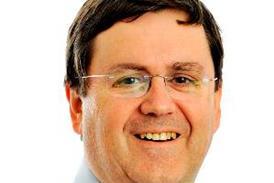Julian Emms explains how Berkshire Healthcare’s rapid assessment community clinic is supporting acute hospitals, GPs and ambulance services this winter
Mark Newbold rightly said in his article earlier this month that in order to manage the demand for NHS emergency care, the whole system needs to change.
As he pointed out, we know many patients are going to accident and emergency and then being admitted to hospital, not because their health needs specialist acute care but simply because no other appropriate service exists. What’s needed is more responsive care within community settings that bridges the gap between community and acute care.
‘Now really is the time for community healthcare providers and commissioners to set up and analyse the effectiveness of their intermediate care services’
Professor John Young, national clinical director for integration and frail elderly at NHS England, has said that intermediate care services offer “clear alternatives to our dominant system of hospital care” and that “the time of intermediate care services is now”.
At Berkshire Healthcare Trust, we have successfully been running a community based service that provides a real alternative to secondary care assessment; one that has been recognised as good practice in a national audit of intermediate care by NHS Benchmarking and saved the local healthcare system £97,000 in a three month period alone, based on the number of avoidable admissions to secondary care and the 2011-12 tariff for admitted patient care and outpatient procedures.
Our rapid assessment community clinic is based within a local community clinic and supports people who live in the east of Berkshire, have complex health and social care needs and need urgent medical attention. The service isn’t just supporting patients though. It is also providing support to the acute hospitals, GPs and the local ambulance trust by providing a real alternative to secondary care assessment and admission.
GPs and ambulance crew can refer to the clinic when they feel a patient would otherwise need to be admitted to hospital because they are not safe to stay at home but, who do not need acute hospital care.
Reduction in admissions
Since it started three years ago, the service has received 931 referrals, of which just 99 people, or one in 10, have required acute hospital admission and 101 people have needed one of our community hospital beds. During operational hours referrals are responded to within 15 minutes and patients seen within two to 48 hours, depending on the outcomes of the initial triage and the preference of the patient and their family. Every patient receives a care plan.
‘The winter pressures facing hospital emergency departments and GPs mean they need to divert their patients to a more suitable alternative’
By putting together a care plan and coordinating a team of people who have the right skills and expertise, including working closely with our social care colleagues, the rapid assessment clinic has been able to support the remaining 731 people to manage their condition at home.
This latter figure is really significant when we consider the average age of patients at the clinic is 83 years old. When asked, none of the patients said they would have preferred to have been cared for in an acute setting.
What makes this clinic such a success is threefold. First, it is staffed by a team of different professionals, from specialists and consultants to advanced nurse practitioners and therapists specialising in looking after older people.
Second, there is onsite diagnostics including radiology, phlebotomy, ultrasound and electrocardiography recording.
Third, our position as a provider of community healthcare means the service has a direct route into other community health services such as community matrons, district nurses and domiciliary therapy, as well as a close working relationship with the short-term response and re-enablement teams within the three local authorities.
Combined, these three things enable us to give patients the best care in the right place, closer to home.
Open the conversation
Our referral rate to the clinic has nearly tripled in the past few months, peaking at 71 referrals in November. Why is this? GPs are more aware of the clinic; we have successfully implemented integrated primary care teams across east Berkshire, which has led to more effective working; but I also have no doubt that this increased use is also because of the winter pressures facing hospital emergency departments and GPs knowing they need to divert their patients to a more suitable alternative.
Returning to Professor Young’s point, now really is the time for community healthcare providers and commissioners to set up and analyse the effectiveness of their intermediate care services.
Have that conversation. Involve colleagues in social care and secondary care. Start looking at things from a new perspective, one that truly reflects the meaning of the word “intermediate” and bridges the gap.
Julian Emms is chief executive at Berkshire Healthcare Foundation Trust


























7 Readers' comments